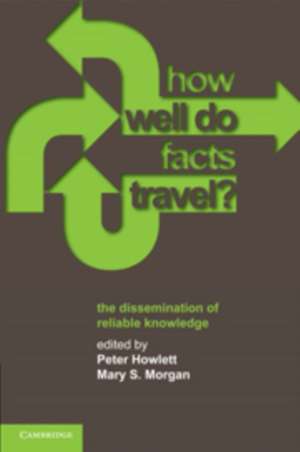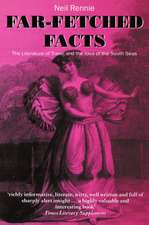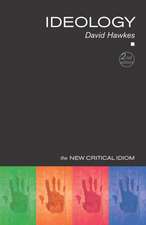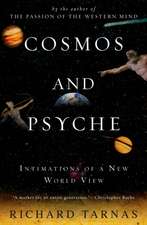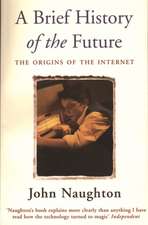How Well Do Facts Travel?: The Dissemination of Reliable Knowledge
Editat de Peter Howlett, Mary S. Morganen Limba Engleză Hardback – 14 noi 2010
| Toate formatele și edițiile | Preț | Express |
|---|---|---|
| Paperback (1) | 296.14 lei 6-8 săpt. | |
| Cambridge University Press – 14 noi 2010 | 296.14 lei 6-8 săpt. | |
| Hardback (1) | 706.89 lei 6-8 săpt. | |
| Cambridge University Press – 14 noi 2010 | 706.89 lei 6-8 săpt. |
Preț: 706.89 lei
Preț vechi: 821.96 lei
-14% Nou
Puncte Express: 1060
Preț estimativ în valută:
135.28€ • 140.43$ • 112.80£
135.28€ • 140.43$ • 112.80£
Carte tipărită la comandă
Livrare economică 22 martie-05 aprilie
Preluare comenzi: 021 569.72.76
Specificații
ISBN-13: 9780521196543
ISBN-10: 052119654X
Pagini: 488
Ilustrații: 51 b/w illus.
Dimensiuni: 157 x 235 x 31 mm
Greutate: 0.77 kg
Editura: Cambridge University Press
Colecția Cambridge University Press
Locul publicării:New York, United States
ISBN-10: 052119654X
Pagini: 488
Ilustrații: 51 b/w illus.
Dimensiuni: 157 x 235 x 31 mm
Greutate: 0.77 kg
Editura: Cambridge University Press
Colecția Cambridge University Press
Locul publicării:New York, United States
Cuprins
1. Travelling facts Mary S. Morgan; Part I. Matters of Fact: 2. Facts and building artefacts: what travels in material objects? Simona Valeriani; 3. A journey through times and cultures? Ancient Greek forms in American nineteenth-century architecture: an archaeological view Lambert Schneider; 4. Manning's N: putting roughness to work Sarah J. Whatmore and Catharina Landström; 5. My facts are better than your facts: spreading good news about global warming Naomi Oreskes; 6. Real problems with fictional cases Jon Adams; Part II. Integrity and Fruitfulness: 7. Ethology's travelling facts Richard Burkhardt; 8. Travelling facts about crowded rats: rodent experimentation and the human sciences Ed Ramsden; 9. Using cases to establish novel diagnoses: creating generic facts by making particular facts travel together Rachel Ankeny; 10. Technology transfer and travelling facts: a perspective from Indian agriculture Peter Howlett and Aashish Velkar; 11. Archaeological facts in transit: the eminent mounds of central North America Alison Wylie; Part III. Companionship and Character: 12. Packaging small facts for re-use: databases in model organism biology Sabina Leonelli; 13. Designed for travel: communicating facts through images Martina Merz; 14. Using models to keep us healthy: the productive journeys of facts across public health research networks Erika Mansnerus; 15. The facts of life and death: a case of exceptional longevity David Haycock; 16. Love life of a fact Heather Schell.
Recenzii
'This fascinating interdisciplinary collection arising from an extraordinary international collaboration is a significant and innovative contribution to a crucial question in science and technology studies: what do we mean by a 'fact'? New light is thrown on this old question by a fresh focus on the transmission and transformation of facts between different contexts, with very welcome attention to neglected subject areas, too. It is an intellectual feast of a volume, with plenty of food for thought for historians, philosophers, and natural and social scientists, especially those who are uncomfortable sitting in conventional disciplinary pigeonholes.' Hasok Chang, University of Cambridge
'This is a lively and diverse collection of essays about the lives of facts: 'shared pieces of knowledge that hold the qualities of being autonomous, short, specific and reliable.' The book is not so much about what facts are, but about what makes them travel - across space, time, and social worlds - and what gives them character. Focusing on the engaging question, what makes some facts travel well, that is, with integrity, yet with the ability to be put fruitfully to new uses, the book provides such a rich survey of curious, prosaic, profound, and false - as well as true - facts that readers will want to try their hand at grand theorizing, which the authors have politely and wisely refrained from doing. It will be an interesting experiment to see how well these facts about facts travel, and where.' James Griesemer, University of California, Davis
'How Well Do Facts Travel? accomplishes the uncommon feat of bringing fresh thinking to a most common phenomenon. Far more than merely contextualizing the use of 'facts' in myriad fields, this eye-opening and deeply thoughtful collection of essays sets facts in motion, models their dynamics, and maps their travels. Adventurous yet grounded, the group of scholars engages and challenges assumptions in disciplines ranging from history and archaeology to economics and policy to biology and design.' Randall Mason, University of Pennsylvania
'Stemming from a five-year group multidisciplinary research project, How Well Do Facts Travel? is a welcome and insightful contribution to the growing bodies of scholarship on comparative and historical epistemology, cultural and technological transfer, social networking, and the philosophies of the social and physical sciences. As with the work of Daston, Poovey, and Latour, this diverse and compelling collection of essays will be as usefully provocative to scholars in the arts and humanities as it will to those in the sciences.' Mark A. Meadow, University of California, Santa Barbara and Leiden University, the Netherlands
'How Well Do Facts Travel? provides an usual perspective on science and its communication by dealing with the 'lives of facts' and their constitution, development, and circulation, in disciplines as diverse as architecture and social psychology, climate science, and gerontology.' Staffan Mueller-Wille, University of Exeter
'How Well Do Facts Travel? edited by Peter Howlett and Mary S. Morgan is an impressive exploration - interdisciplinary in character - of the circulation of 'facts' in a number of areas spanning both the natural and social sciences and the humanities as well. Science studies abound in work on the vagaries of metaphors, models, and images. Curiously, so far, facts have hardly been included in this list. Peter Howlett and Mary Morgan's assessment of less the production of facts but what makes them travel and how traveling transforms them opens a new horizon. The authors of the volume address the topic with subtleness and sovereignty, covering a broad range of carefully chosen case studies.' Hans-Jörg Rheinberger, Director, Max Planck Institute for the History of Science, Berlin
'Philosophers of science have long talked about fruitfulness as a criteria of scientific merit. This collection asks how ideas - or facts - actually get to be recognized and used; it is a major contribution that greatly deepens this important problem.' Stephen P. Turner, University of South Florida
'This is a lively and diverse collection of essays about the lives of facts: 'shared pieces of knowledge that hold the qualities of being autonomous, short, specific and reliable.' The book is not so much about what facts are, but about what makes them travel - across space, time, and social worlds - and what gives them character. Focusing on the engaging question, what makes some facts travel well, that is, with integrity, yet with the ability to be put fruitfully to new uses, the book provides such a rich survey of curious, prosaic, profound, and false - as well as true - facts that readers will want to try their hand at grand theorizing, which the authors have politely and wisely refrained from doing. It will be an interesting experiment to see how well these facts about facts travel, and where.' James Griesemer, University of California, Davis
'How Well Do Facts Travel? accomplishes the uncommon feat of bringing fresh thinking to a most common phenomenon. Far more than merely contextualizing the use of 'facts' in myriad fields, this eye-opening and deeply thoughtful collection of essays sets facts in motion, models their dynamics, and maps their travels. Adventurous yet grounded, the group of scholars engages and challenges assumptions in disciplines ranging from history and archaeology to economics and policy to biology and design.' Randall Mason, University of Pennsylvania
'Stemming from a five-year group multidisciplinary research project, How Well Do Facts Travel? is a welcome and insightful contribution to the growing bodies of scholarship on comparative and historical epistemology, cultural and technological transfer, social networking, and the philosophies of the social and physical sciences. As with the work of Daston, Poovey, and Latour, this diverse and compelling collection of essays will be as usefully provocative to scholars in the arts and humanities as it will to those in the sciences.' Mark A. Meadow, University of California, Santa Barbara and Leiden University, the Netherlands
'How Well Do Facts Travel? provides an usual perspective on science and its communication by dealing with the 'lives of facts' and their constitution, development, and circulation, in disciplines as diverse as architecture and social psychology, climate science, and gerontology.' Staffan Mueller-Wille, University of Exeter
'How Well Do Facts Travel? edited by Peter Howlett and Mary S. Morgan is an impressive exploration - interdisciplinary in character - of the circulation of 'facts' in a number of areas spanning both the natural and social sciences and the humanities as well. Science studies abound in work on the vagaries of metaphors, models, and images. Curiously, so far, facts have hardly been included in this list. Peter Howlett and Mary Morgan's assessment of less the production of facts but what makes them travel and how traveling transforms them opens a new horizon. The authors of the volume address the topic with subtleness and sovereignty, covering a broad range of carefully chosen case studies.' Hans-Jörg Rheinberger, Director, Max Planck Institute for the History of Science, Berlin
'Philosophers of science have long talked about fruitfulness as a criteria of scientific merit. This collection asks how ideas - or facts - actually get to be recognized and used; it is a major contribution that greatly deepens this important problem.' Stephen P. Turner, University of South Florida
Descriere
Facts often acquire a life of their own; the stories in this book explain why.
